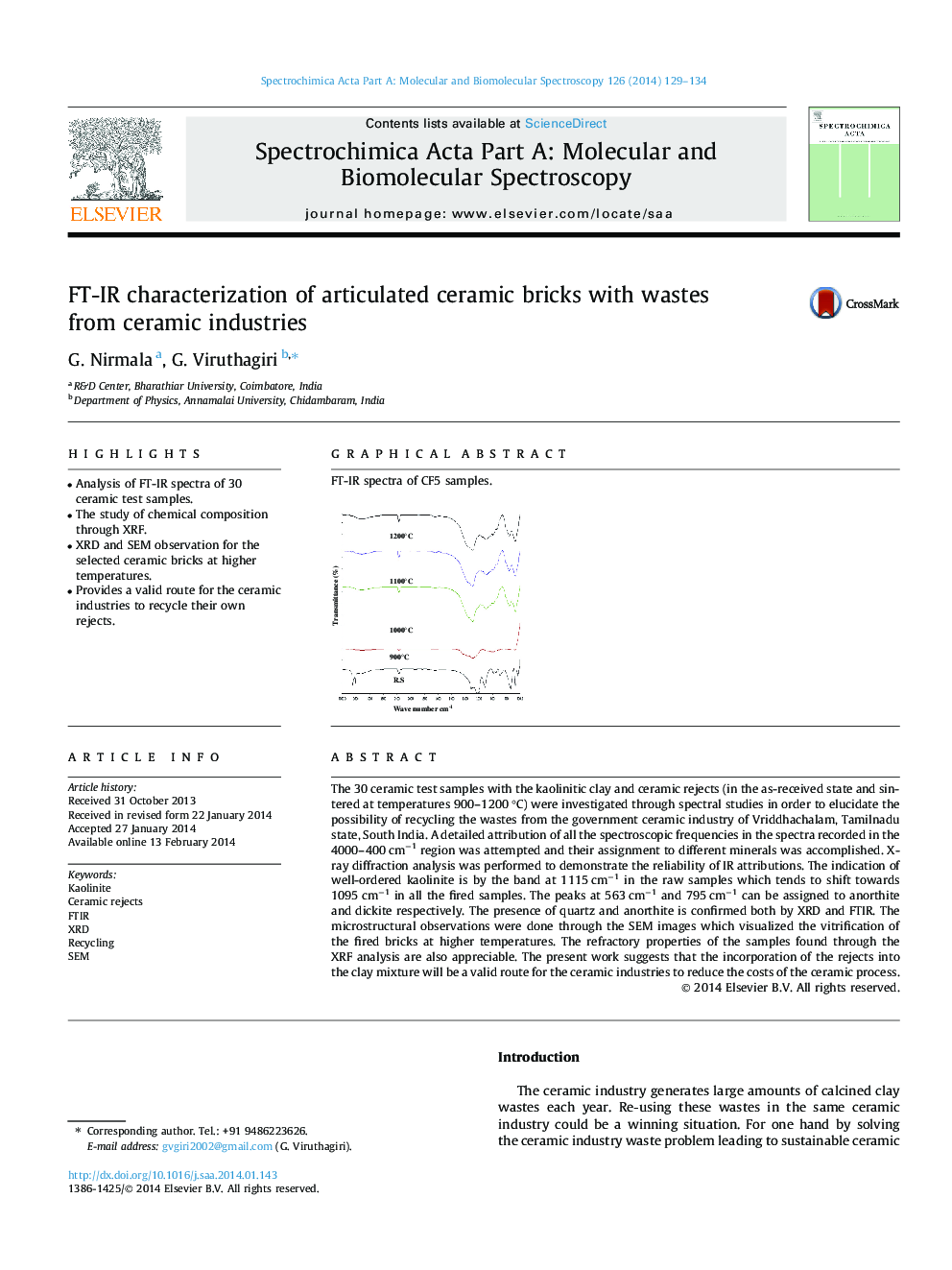| Article ID | Journal | Published Year | Pages | File Type |
|---|---|---|---|---|
| 1229938 | Spectrochimica Acta Part A: Molecular and Biomolecular Spectroscopy | 2014 | 6 Pages |
•Analysis of FT-IR spectra of 30 ceramic test samples.•The study of chemical composition through XRF.•XRD and SEM observation for the selected ceramic bricks at higher temperatures.•Provides a valid route for the ceramic industries to recycle their own rejects.
The 30 ceramic test samples with the kaolinitic clay and ceramic rejects (in the as-received state and sintered at temperatures 900–1200 °C) were investigated through spectral studies in order to elucidate the possibility of recycling the wastes from the government ceramic industry of Vriddhachalam, Tamilnadu state, South India. A detailed attribution of all the spectroscopic frequencies in the spectra recorded in the 4000–400 cm−1 region was attempted and their assignment to different minerals was accomplished. X-ray diffraction analysis was performed to demonstrate the reliability of IR attributions. The indication of well-ordered kaolinite is by the band at 1115 cm−1 in the raw samples which tends to shift towards 1095 cm−1 in all the fired samples. The peaks at 563 cm−1 and 795 cm−1 can be assigned to anorthite and dickite respectively. The presence of quartz and anorthite is confirmed both by XRD and FTIR. The microstructural observations were done through the SEM images which visualized the vitrification of the fired bricks at higher temperatures. The refractory properties of the samples found through the XRF analysis are also appreciable. The present work suggests that the incorporation of the rejects into the clay mixture will be a valid route for the ceramic industries to reduce the costs of the ceramic process.
Graphical abstractFT-IR spectra of CF5 samples.Figure optionsDownload full-size imageDownload as PowerPoint slide
